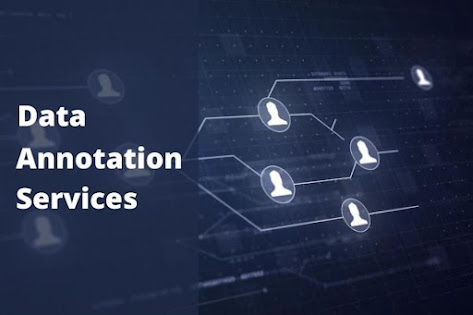Exploring the Impact of Video Dataset for AI on Machine Learning Models
Introduction
In the ever-evolving landscape of artificial intelligence (AI), video datasets play a pivotal role in shaping the accuracy and efficiency of machine learning models. The advent of sophisticated video annotation services has further propelled the utility of these datasets, enabling more precise and diverse applications in various industries. This article delves into the significance of video dataset for AI and its profound impact on machine learning models, with a special focus on video annotation services.
Video datasets are collections of video clips that are used to train, test, and validate machine learning algorithms. They are crucial for developing models that can understand and interpret visual information, such as object recognition, activity recognition, and video classification. The richness and complexity of video data provide a more comprehensive and nuanced understanding of the real world, making video datasets an indispensable resource for AI development.
Enhancing Machine Learning Models with Video Datasets
The integration of video datasets into machine learning models significantly enhances their performance and accuracy. For instance, in object recognition, video datasets allow models to learn not only the appearance of objects but also their movement and interaction with the environment. This temporal information is crucial for developing more robust and reliable models that can perform well in dynamic real-world scenarios.
Similarly, in the realm of activity recognition, video datasets provide the sequential data necessary for models to understand and predict complex human behaviours. This has profound implications for fields such as surveillance, healthcare, and sports analytics, where accurate interpretation of human activities is paramount.
The Role of Video Annotation Services
Video annotation is the process of labelling video data with relevant information, such as object boundaries, actions, or events. This annotated data is then used to train machine learning models, making the annotation process a critical step in the development of AI applications.
Video annotation services have revolutionised the way video datasets are prepared for machine learning. These services employ a combination of human expertise and automated tools to annotate video data accurately and efficiently. By providing high-quality, labeled datasets, video annotation services enable the development of more sophisticated and accurate machine learning models.
Challenges and Solutions
Despite their immense potential, video datasets for AI are not without challenges. The sheer volume and complexity of video data demand substantial computational resources for processing and analysis. Moreover, ensuring the privacy and security of video data is a significant concern, especially in sensitive applications such as surveillance and healthcare.
To address these challenges, researchers and developers are exploring various solutions, such as developing more efficient algorithms for video processing, implementing robust data privacy measures, and leveraging cloud computing for scalable storage and computation.
Future Perspectives
The future of video datasets for AI looks promising, with advancements in technology and methodology continuously expanding their potential. Emerging trends such as the use of synthetic data, integration of multimodal datasets, and the application of transfer learning are expected to further enhance the capabilities of machine learning models.
Moreover, as video annotation services continue to evolve, the process of preparing video datasets will become more streamlined and cost-effective, accelerating the pace of innovation in AI.
Advancements in Video Annotation Services
Video annotation services have seen significant advancements in recent years. Techniques such as semi-automated annotation, where machine learning models assist human annotators, have greatly improved the efficiency and accuracy of the annotation process. Furthermore, the development of specialised annotation tools for specific tasks, such as facial recognition or vehicle tracking, has enabled more targeted and effective training of machine learning models.
Applications in Various Industries
The impact of video datasets for AI extends across various industries. In the automotive sector, video datasets are crucial for developing autonomous driving systems, where accurate object detection and scene understanding are vital. In retail, video analytics can help in customer behaviour analysis and inventory management. In agriculture, video datasets are used for monitoring crop health and automating harvesting processes.
Ethical Considerations and Bias Mitigation
As video datasets become more prevalent in AI applications, ethical considerations such as privacy and bias become increasingly important. Ensuring that video datasets are diverse and representative is crucial to prevent biases in machine learning models. Techniques such as data augmentation and fairness-aware machine learning are being explored to mitigate bias in video-based AI systems.
Integration with Other Data Modalities
The integration of video datasets with other data modalities, such as audio, text, and sensor data, is a growing trend in AI. This multimodal approach allows for a more comprehensive understanding of complex phenomena, leading to more accurate and robust machine learning models. For example, in emotion recognition, combining video data with audio and physiological signals can provide a more complete picture of a person's emotional state.
Why GTS.AI is Your Ideal Partner for Video Dataset Creation for AI in 2024
At Globose Technology Solutions Pvt. Ltd., we specialise in providing top-notch video dataset creation services for AI applications in 2024. Our expertise lies in meticulously annotating videos and images to ensure your AI models are trained with utmost accuracy. We pride ourselves on delivering high-quality, customised solutions that meet the specific requirements of your AI projects. With GTS.AI, you can be confident in receiving annotation services that not only enhance the performance of your AI models but also drive innovation and success in your AI initiatives. Explore our offerings at gts.ai and learn how we can contribute to your AI journey.
Conclusion
Video datasets for AI are a cornerstone of modern machine learning, providing the rich and complex data necessary for developing accurate and robust models. The advent of video annotation services has further enhanced the utility of these datasets, enabling more precise and diverse applications. As technology advances, the impact of video datasets on machine learning models will continue to grow, driving innovation and progress in AI.
.jpg)




Comments
Post a Comment